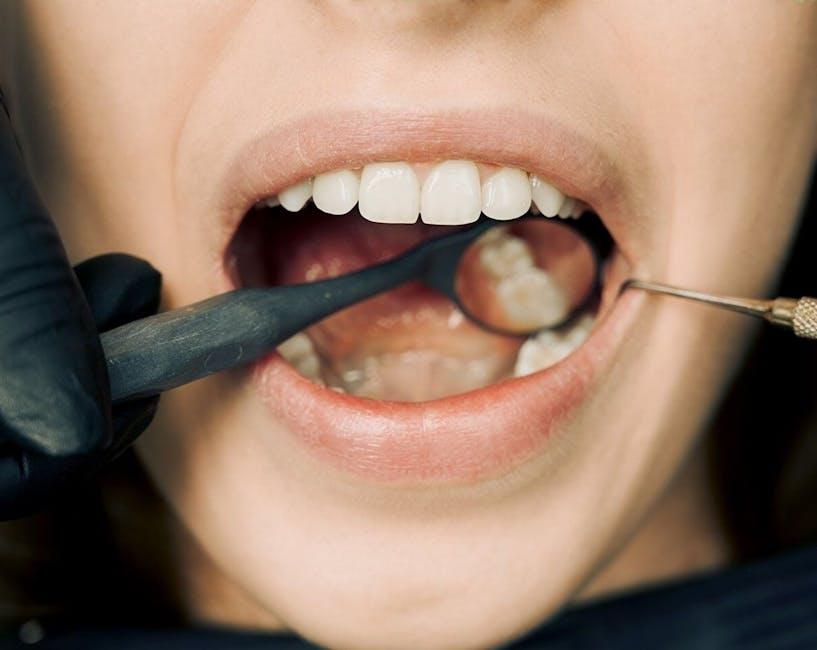
Dental Coverage for Patients with Medicaid May Not Prevent Tooth-Related ER Visits – Stanford Medicine Insights
Dental health is a critical component of overall wellbeing, yet many patients insured under Medicaid continue to experience avoidable tooth-related emergencies that lead them to emergency room (ER) visits. Recent research from Stanford Medicine sheds light on the complex relationship between Medicaid dental coverage and persistent ER visits for dental conditions. This article dives deep into the challenges surrounding dental coverage for Medicaid recipients, explores why ER visits related to oral health persist despite coverage, and offers practical advice for both patients and healthcare advocates to improve outcomes.
Understanding Medicaid Dental Coverage
Medicaid provides essential healthcare benefits to millions of Americans, including dental coverage for certain populations. However, dental benefits under Medicaid vary widely between states, often resulting in inconsistent access to comprehensive oral care for beneficiaries.
Generally, Medicaid dental coverage includes:
- Preventive services like cleanings, exams, and X-rays
- Emergency dental treatment for severe pain or infection
- Routine restorative care such as fillings and extractions (varies by state)
- Limited orthodontic or prosthodontic services (in some states)
Despite these benefits, Stanford Medicine’s research indicates that the mere presence of dental coverage does not necessarily result in fewer tooth-related visits to hospital ERs.
Key Findings from Stanford Medicine’s Research
The study conducted by Stanford researchers analyzed data on Medicaid enrollees and their patterns of dental-related ER visits. Here are some notable conclusions:
| Finding | Insight |
|---|---|
| Dental coverage alone insufficient | Medicaid dental benefits did not significantly reduce ER visits for dental pain or infections. |
| Access & availability barriers | Difficulty finding dentists accepting Medicaid contributed to delayed treatment and ER visits. |
| Preventive care underutilized | Many patients missed routine dental checkups, leading to emergency conditions. |
| Socioeconomic factors | Socioeconomic challenges and education gaps affect oral health maintenance and timely care seeking. |
| ER as default option | Emergency rooms often became the first point of care due to poor access to dental offices. |
Why Do Medicaid Patients Still Visit the ER for Tooth Problems?
Several critical factors contribute to this concerning trend:
1. Limited Dentist Participation in Medicaid
Reimbursement rates under Medicaid tend to be lower than private insurance, deterring many dentists from accepting Medicaid patients. This scarcity limits appointment availability and forces patients to delay care until emergencies arise.
2. Lack of Preventive Care and Education
Despite coverage, many Medicaid beneficiaries do not regularly visit dentists for checkups or preventive services. A lack of oral health education and competing life priorities often result in neglecting early-stage tooth problems.
3. Social Determinants of Health
Broader social factors—such as poverty, transportation challenges, and housing instability—create barriers to accessing routine dental care, pushing patients toward ERs when pain becomes unbearable.
Benefits of Medicaid Dental Coverage and Areas for Improvement
While dental coverage under Medicaid is essential, its impact can be significantly amplified with focused efforts. Here are benefits and improvement opportunities:
- Benefit: Access to emergency dental care at no or low out-of-pocket costs.
- Benefit: Covered preventive services that reduce long-term oral health issues if utilized consistently.
- Improvement Needed: Increase Medicaid reimbursement to expand dentist participation.
- Improvement Needed: Invest in oral health education and outreach tailored to Medicaid populations.
- Improvement Needed: Improve care coordination between dental providers, primary care, and emergency services.
Practical Tips for Medicaid Patients to Avoid Dental ER Visits
Patients enrolled in Medicaid can take proactive steps to reduce tooth-related emergencies and improve oral health outcomes:
- Schedule Regular Checkups: Make preventive dental appointments a routine, even if no pain is present.
- Maintain Oral Hygiene: Brush twice daily with fluoride toothpaste and floss regularly.
- Know Your Coverage: Understand what dental benefits your state’s Medicaid program offers, including emergency services.
- Seek Early Care: At the first sign of tooth pain or infection, contact a dental provider rather than waiting for symptoms to worsen.
- Use Community Resources: Utilize federally qualified health centers or dental clinics that accept Medicaid.
- Communicate with Providers: Let your dentist or primary care provider know about challenges you face in accessing care.
Case Study: Improving Oral Health Outcomes in Medicaid Populations
One innovative program in California integrated dental care access with Medicaid case management. Highlights include:
- Mobile dental units provided in underserved communities
- Dedicated patient navigators helped schedule appointments and follow up on care
- Oral health education workshops targeted at Medicaid families
- Result: Reduced annual ER visits for dental complaints by 18% over two years
This success underscores the need for comprehensive oral health strategies beyond mere insurance coverage.
Conclusion: Toward Better Oral Health Equity for Medicaid Patients
Medicaid dental coverage remains a crucial lifeline for millions of low-income Americans faced with oral health challenges. However, the Stanford Medicine study clearly shows that coverage alone is not enough to prevent costly and painful tooth-related ER visits. Addressing access barriers, increasing patient education, and enhancing preventive care are vital steps to transforming oral health outcomes within the Medicaid population.
For patients, understanding and utilizing dental benefits fully and seeking timely care are essential proactive steps. For policymakers and healthcare providers, investing in provider participation incentives, innovative care models, and community outreach will pave the way for a future where fewer Medicaid patients suffer preventable dental emergencies.


